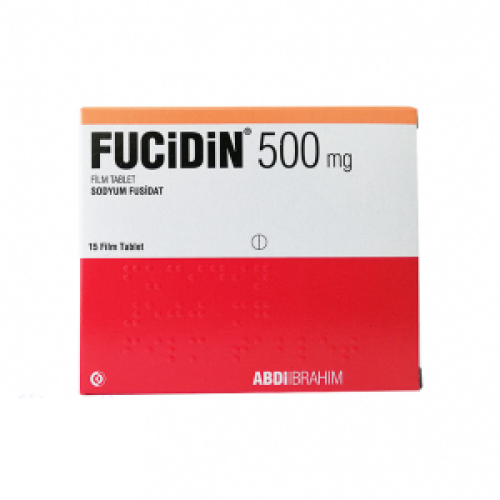CLASSIFICATION
Steroid antibacterials
ACNE
No
WATER RETENTION
No
HBR
No
HEPATOTOXICITY
No
AROMATIZATION
No
MANUFACTURER
Abdi Ibrahim
WAREHOUSE
International Warehouse 2
SUBSTANCE
Sodium fusidat
,
Fucidin is utilized for treating various staphylococcal infections caused by susceptible bacteria. These infections include skin infections, osteomyelitis, pneumonia, sepsis, wound infections, endocarditis, and superinfected cystic fibrosis.
For cases where oral administration is unsuitable, particularly when gastrointestinal absorption is unreliable, Fucidin should be given intravenously.
Dosage and AdministrationDosageFor staphylococcal skin infections:
Adults: - Typical dosage: 250 mg of sodium fusidate, administered twice daily for 5 to 10 days.
For staphylococcal infections such as osteomyelitis, pneumonia, sepsis, wound infections, endocarditis, and superinfected cystic fibrosis:
Adults: - Typical dosage: 500 mg of sodium fusidate, given three times daily.
In severe cases involving aggressive infections, the dosage may be increased to double or combined with other therapies if appropriate.
Elderly patients do not require dosage adjustments.
Since Fucidin is eliminated through bile, no alterations are needed for patients with renal impairment.
For patients undergoing hemodialysis, no dosage adjustments are necessary as Fucidin is not significantly removed during dialysis.
Administration MethodFucidin is meant for oral use.
Special Warnings and PrecautionsStatins (HMG-CoA reductase inhibitors) should not be used alongside systemic Fucidin, as there are reports of rhabdomyolysis (including deaths) in patients on this combination (refer to section 4.5). If systemic Fucidin is deemed necessary, statin therapy should be stopped during the treatment. Patients must seek immediate medical attention if they experience muscle weakness, pain, or tenderness. Statin therapy can be restarted seven days after the last systemic Fucidin dose. In rare cases where prolonged systemic Fucidin is required for severe infections, the concurrent use of statins should be evaluated individually and managed carefully.
There have been a few reports of severe skin reactions, such as Drug Reaction with Eosinophilia and Systemic Symptoms (DRESS) syndrome, toxic epidermal necrolysis (Lyell's syndrome), and Stevens-Johnson syndrome associated with systemic Fucidin. Patients should be vigilant for skin reactions and symptoms indicative of these serious conditions, often appearing in the initial weeks of treatment. If such reactions are suspected, Fucidin should be discontinued and not reintroduced.
Fusidic acid is processed by the liver and eliminated through bile. There have been instances of elevated liver enzymes and jaundice during systemic Fucidin therapy, although these effects are typically reversible upon stopping the medication.
Systemic Fucidin should be used cautiously in patients with liver dysfunction or those taking potentially liver-damaging drugs; liver function should be monitored. Care is necessary for patients with biliary disease or obstruction, and those on HIV protease inhibitors (see section 4.5). Fusidic acid can inhibit the binding of bilirubin to albumin, which necessitates caution in administering it to patients with impaired bilirubin transport and metabolism, particularly neonates, due to the potential risk of kernicterus.
There have been reports of bacterial resistance associated with fusidic acid use. As with all antibiotics, prolonged or repeated use may heighten the risk of antibiotic resistance.
Patients with rare hereditary conditions such as galactose intolerance, Lapp lactase deficiency, or glucose-galactose malabsorption should avoid this medication due to its lactose content.

